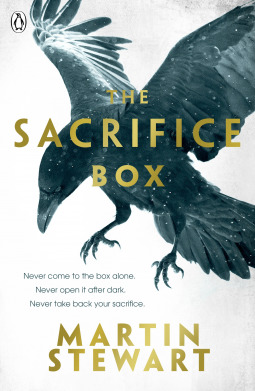Well, it is that time of year again and so I want to introduce my spooky list of haunted tales for reluctant readers. As we move ever closer to Haloween, many of us begin to gravitate towards the horror side of our DVD collections. However, this holiday season why don't you try on one of these spine-tingling tales that are sure to have you greeting the holiday season in style.
Horror, as we all know is the genre of fiction that is made to startle, frighten or at the worst of times disgust the viewer. I for one am not huge on the blood and guts brand of horror and thus will not be including them in this must-read selection. That being said, parents and teachers feel free to browse these novels ahead of time if you are afraid they might not be a good fit for your child or students.
Without further ado, let us see what books might interest those reluctant holiday goblins and like always leave a comment if you have any books you would like to add to this list:
"In the summer of 1982, five friends discover an ancient stone box hidden deep in the woods. They seal inside of it treasured objects from their childhoods, and they make a vow:
Never come to the box alone.
Never open it after dark.
Never take back your sacrifice.
Four years later, a series of strange and terrifying events begin to unfold: mirrors inexplicably shattering, inanimate beings coming to life, otherworldly crows thirsting for blood. Someone broke the rules of the box, and now everyone has to pay.
But how much are they willing to sacrifice?"
"A secret Arctic experiment becomes a frozen nightmare, when a team of scientists are set adrift on an iceberg--with a murderer in their midst, and a massive explosive charge only hours away from detonation."
"When Poison's baby sister is stolen by phaeries, Poison sets off on an incredible and dangerous journey to get her sister back from the Phaerie Lord. But as Poison travels to the Realm of Phaerie, she discovers that her story - and her destiny - is not in her control and that she will need all her wits about her to survive. A fantasy where the power of story maybe the only thing that will save you, and where imagination knows no bounds."

"Elizabeth Lavenza hasn't had a proper meal in weeks. Her thin arms are covered with bruises from her "caregiver," and she is on the verge of being thrown into the streets . . . until she is brought to the home of Victor Frankenstein, an unsmiling, solitary boy who has everything--except a friend.
Victor is her escape from misery. Elizabeth does everything she can to make herself indispensable--and it works. She is taken in by the Frankenstein family and rewarded with a warm bed, delicious food, and dresses of the finest silk. Soon she and Victor are inseparable.
But her new life comes at a price. As the years pass, Elizabeth's survival depends on managing Victor's dangerous temper and entertaining his every whim, no matter how depraved. Behind her blue eyes and sweet smile lies the calculating heart of a girl determined to stay alive no matter the cost . . . as the world she knows is consumed by darkness. "
![The Devouring by [Holt, Simon]](https://images-na.ssl-images-amazon.com/images/I/51biCAU1W6L.jpg)
"When Reggie finds an old journal and reads about the Vours, supernatural creatures who feast on fear and attack on the eve of the winter solstice, she assumes they are just the musings of some lunatic author. But soon, they become a terrifying reality when she begins to suspect that her timid younger brother might be one of their victims.
Risking her life and her sanity, Reggie enters a living nightmare to save the people she loves. Can she devour own her fears before they devour her?"




![The Polar Express by [Van Allsburg, Chris]](https://images-na.ssl-images-amazon.com/images/I/614TVP338CL._SX260_.jpg)
![The Giving Tree by [Silverstein, Shel]](https://images-na.ssl-images-amazon.com/images/I/41aWAJ1qNKL.jpg)



![Parallel Journeys by [Ayer, Eleanor H.]](https://images-na.ssl-images-amazon.com/images/I/51%2BO7vGtY0L.jpg)
![The Burden of Hitler's Legacy by [Heck, Alfons]](https://images-na.ssl-images-amazon.com/images/I/51sCpkBt4LL.jpg)
![Child of Hitler: Germany in the Days When God Wore a Swastika by [Heck, Alfons]](https://images-na.ssl-images-amazon.com/images/I/51DP9o8ciuL.jpg)



![Don Quixote by [Cervantes, Miguel de]](https://images-na.ssl-images-amazon.com/images/I/41GjB-dATXL.jpg)
![Jane Austen by [Jane Austen]](https://images-na.ssl-images-amazon.com/images/I/51qYCtaXt8L.jpg)
![Fahrenheit 451: A Novel by [Bradbury, Ray]](https://images-na.ssl-images-amazon.com/images/I/51VsfbzlU%2BL.jpg)
![The Great Gatsby by [Fitzgerald, F. Scott]](https://images-na.ssl-images-amazon.com/images/I/51vv75oglyL.jpg)
![GRIMM'S FAIRY TALES (non illustrated) by [Grimm, Jacob, Grimm, Wilhelm]](https://images-na.ssl-images-amazon.com/images/I/51sT47HtaJL.jpg)



![Icebound: A Novel by [Koontz, Dean]](https://images-na.ssl-images-amazon.com/images/I/51SCO%2BxSUrL.jpg)


![The Devouring by [Holt, Simon]](https://images-na.ssl-images-amazon.com/images/I/51biCAU1W6L.jpg)



![At Swim, Two Boys by [O'Neill, Jamie]](https://images-na.ssl-images-amazon.com/images/I/51013HSALxL.jpg)






